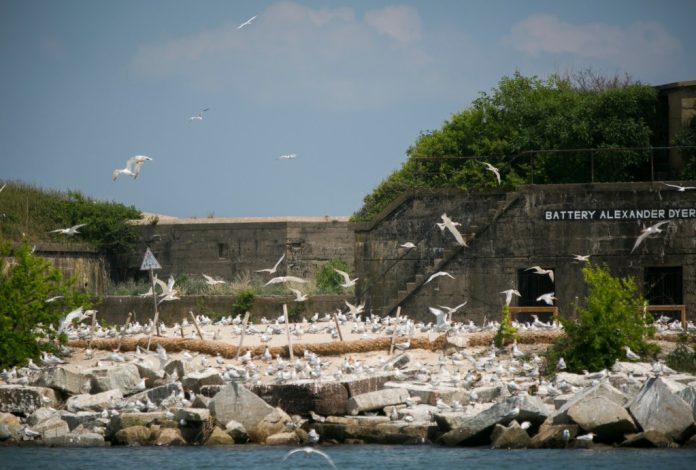News of a $10 million plan to build a new, permanent island for the migratory seabirds whose nests now overcrowd Fort Wool is heartening evidence that, despite obstacles, we can work together to protect our environment and heritage even while dealing with today’s realities.
At casual glance, word of a new nesting site project might seem an extravagance prompted by overzealous environmentalists, or maybe a wasteful result of government ineptitude.
Wasn’t it just three years ago that we were hearing about a massive emergency effort to revamp Fort Wool and persuade a colony of 25,000 birds to move there when the expansion of the Hampton Roads Bridge-Tunnel drove them from their nesting grounds on the bridge’s manmade South Island? And wasn’t it just a couple of years ago that people were celebrating the success of that effort?
All that’s true, but building a new, larger, permanent home for the seabirds was always part of the plan. The move to Fort Wool, connected to the South Island by a rock jetty, was an emergency stopgap, a desperate gamble to try to protect one of Virginia’s most important colonies of migratory seabirds — royal terns, sandwich terns, laughing gulls, black skimmers and other birds that had been coming to the HRBT’s South Island for decades to lay their eggs and hatch their young.
If a government misstep was involved, it was a regulatory lapse that caused the state to wait almost too long to save the birds. Before the Trump administration’s changes, the state would routinely have produced a plan to minimize harm to the birds. Instead, a weakened interpretation of the Migratory Bird Treaty Act meant the disaster the bridge expansion could spell for these ecologically important birds wasn’t considered until environmentalists raised the alarm.
Ralph Northam, then governor, responded. The last-ditch emergency effort was such a success, in fact, that by the second year the colony was nesting at Fort Wool, historic preservationists were worrying about the effects of the birds’ messy lifestyle on an already dilapidated historic site that’s important in chronicling Black history. Built with the help of slaves not long after the War of 1812, Fort Wool was a refuge for escaped slaves during the Civil War.
Advocates still hope to repair Fort Wool eventually and reopen it as a historic site. Once the birds are moved to a more appropriate home, such a project would be another plus for the region and its efforts to chronicle our complex shared history.
In any event, Fort Wool isn’t suitable for the birds’ long-term nesting ground. It’s simply too small. Even with three barges providing extra space, it has only about 2.5 acres of nesting area, about a quarter of what was available on South Island. The planned new island, to be built of locally dredged material, will be about 10 times as big.
The project, led by the Army Corps of Engineers, is looking for a suitable spot within about 13 miles of Fort Wool that offers similar ample fishing and scarce predators.
The migratory birds that come here each spring to reproduce are much more than just an interesting, if noisy and smelly, spectacle. They are a crucial part of the overall, interrelated coastal environment that is so important to Hampton Roads and its economy and quality of life. As we have learned to our sorrow over the years, displacing or destroying any part of that environment upsets nature’s balance, with serious repercussions.
Giving these birds a home for years to come will be time and money well spent. If moving the birds to a better location clears the way for long overdue attention to the historical heritage of Fort Wool, that’s another plus.
Taking care of the birds when the bridge-tunnel expansion was needed wasn’t easy. Everyone involved in this heartening effort — environmentalists who raised the alarm, government officials who responded, scientists and agencies that set to work, volunteers who helped — deserves our thanks.




